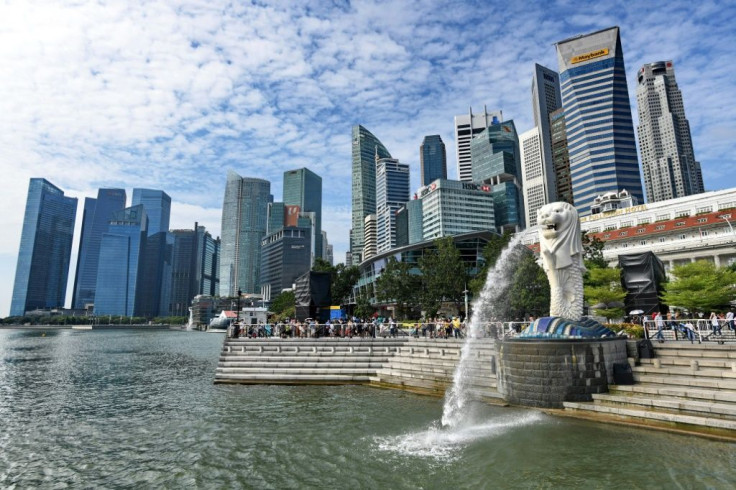Wealthy Singapore Faces Rising Opposition To Immigration

Singapore’s Changi Airport has commenced a six-month trial under which Singaporeans returning home will no longer need passports to clear customs – rather their identities will be verified by iris and facial recognition technology.
This “contactless” form of identification is considered a faster and smoother way of processing arrivals compared to the old passport-and-thumbprint method.
Changi Airport processed some 65.6 million passengers in 2018, a 5.5% jump from the prior year.
However, while Singapore is seeking to make returning citizens more comfortable at airport customs, the city-state is grappling with rising opposition to immigration. As in parts of the West, immigrants are being blamed in Singapore for driving down wages and increasing other living costs.
Proponents of immigration say foreign workers are needed as Singapore ages.
Leong Chan Hoong, an associate professor at the Singapore University of Social Sciences, told World Policy Review that immigration is important to sustain Singapore’s long-term economic performance, “as it is a rapidly aging society with one of the lowest fertility rates in the world.”
Indeed, the government indicated the percentage of citizens at least 65 years of age jumped from 9.9% in 2009 to 16% in 2019. This figure is projected to increase to about 23.7% in 2030.
“Immigration helps to moderate the impact of aging and low birth rates in our citizen population, and keeps it from shrinking over the longer term,” the Prime Minister’s Office Strategy Group said.
However, Leong also said that immigrants are seen by many Singaporeans “as taking away jobs and other resources and eroding Singapore’s cultural identity. There also exists a perception, he added, that Singapore’s political leaders “shows favoritism toward immigrants at the expense of native-born Singaporeans.”
About 40% of Singapore’s 5.7 million residents are immigrants, hailing primarily from China, India, Bangladesh, Malaysia, Philippines and Indonesia.
While the overall population has increased slightly since 2014, the number of permanent residents and nonresidents has actually remained relatively stable over that period.
As of June 2018, Singapore had a population of about 5.64 million – comprised 3.47 million residents, 520,000 permanent residents, who have the most privileges as citizens but can’t vote nor hold office, and 1.64 million nonresidents, who typically are work permit holders, students, foreign domestic workers and other dependents.
Leong noted that since the 2011 election, the government has pacified anti-immigrant elements in the society by, among other things, making “a sharper legal distinction between citizens, permanent residents and migrant workers that made it harder for noncitizens to access public benefits.
For example, Singapore has reduced the issuance of “employment passes” – which are granted to foreign professionals, managers, executives and technicians – to an average of 3,000 between 2014 and 2017, versus a peak of 32,000 in 2011.
While public demonstrations are rare in the city-state, a gathering assembled at the Speaker’s Corner in Hong Lim Park in early November to protest the Singapore-India Comprehensive Economic Cooperation Agreement – a free trade agreement signed in 2005. Protesters contended this agreement makes it too easy for Indians with professional degrees to immigrate into Singapore, thereby hurting Singaporean citizens.
Gilbert Goh, the organizer of the protest, wrote on Facebook: “Singaporeans, it is time to stand up for your rights to a reasonably good job in our own country -- we must always adhere to the Singaporean-first slogan and that employment must be given to a local first before we ever consider a foreigner.”
A recent report on Singapore’s housing market in Bloomberg noted that “with the local labor market hitting a soft patch, and amid rising clamor for a “Singaporean First” employment policy, tight controls on immigration are likely to remain in place through 2020.”
There appears to exist a specific focus on new arrivals from India, many of whom are regarded as unwilling to integrate.
John Solomon. a historian at National University of Singapore, said some Singaporeans are concerned about Indians transferring their caste system.
“Whether or not new immigration from India is indeed bringing about a gradual revival in caste identities in Singapore, the growth of this perception has manifested itself in popular xenophobic stereotypes about the new Indian migrant as an exporter of atavistic and backward social ideas,” he wrote.
Kumaran Pillai, publisher of The Independent News, said new Indian migrants tend to “have their own enclaves” and “they hang around and move in their own circles, ... [and] rarely mix and talk with locals.”
Pillai added that many new Indian immigrants are better educated than native Singaporeans and carry an arrogant attitude.
“They’re perceived as a bit uppity, those in management positions. It’s not caste, it’s class consciousness,” Pillai said.
© Copyright IBTimes 2024. All rights reserved.





















